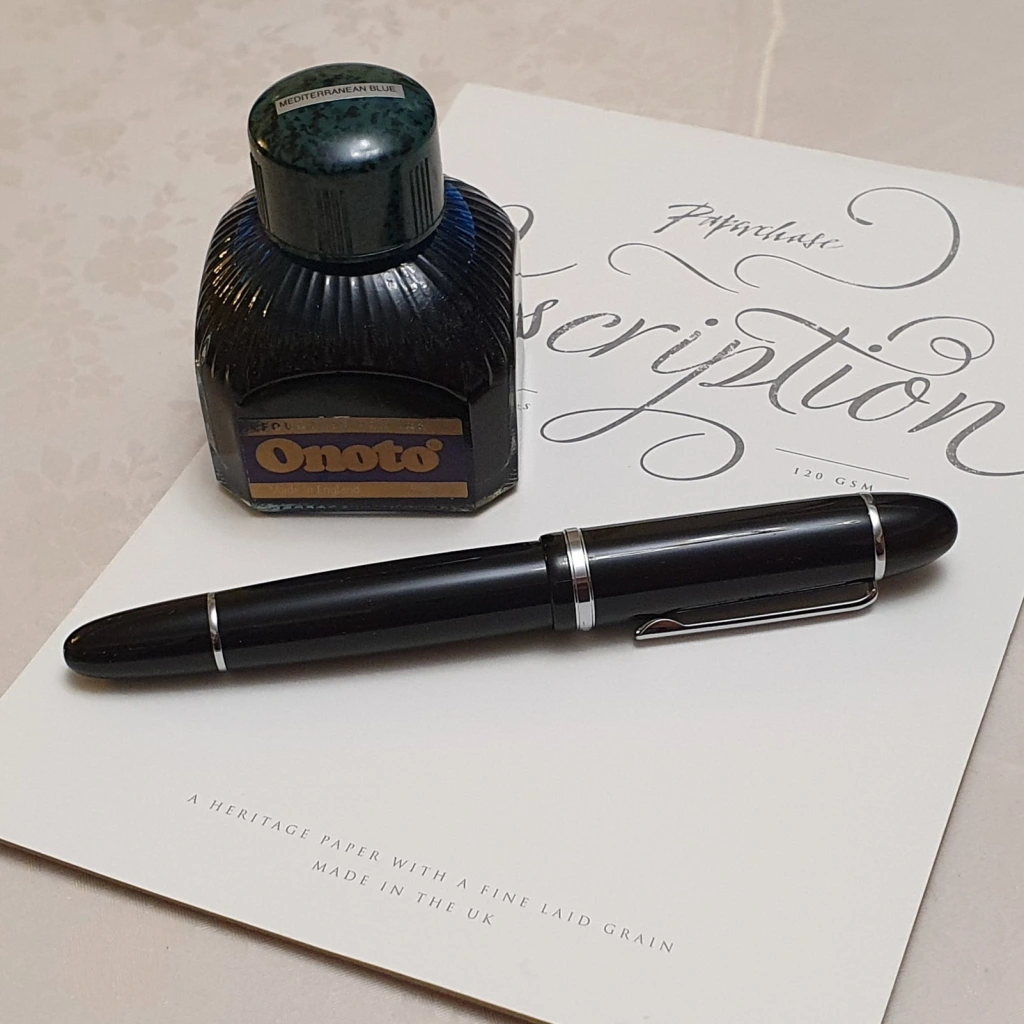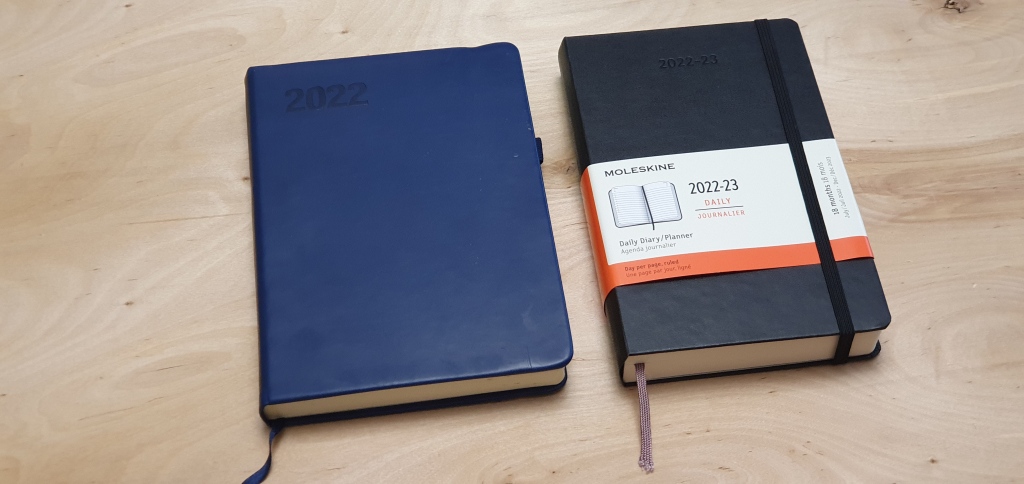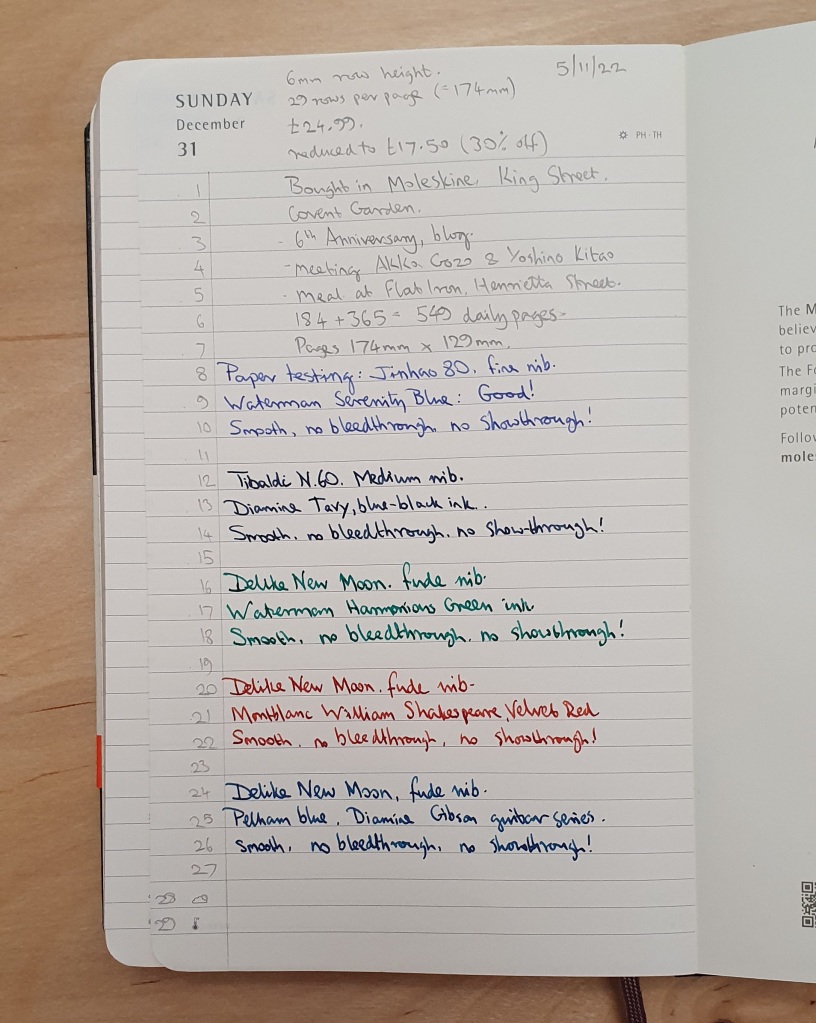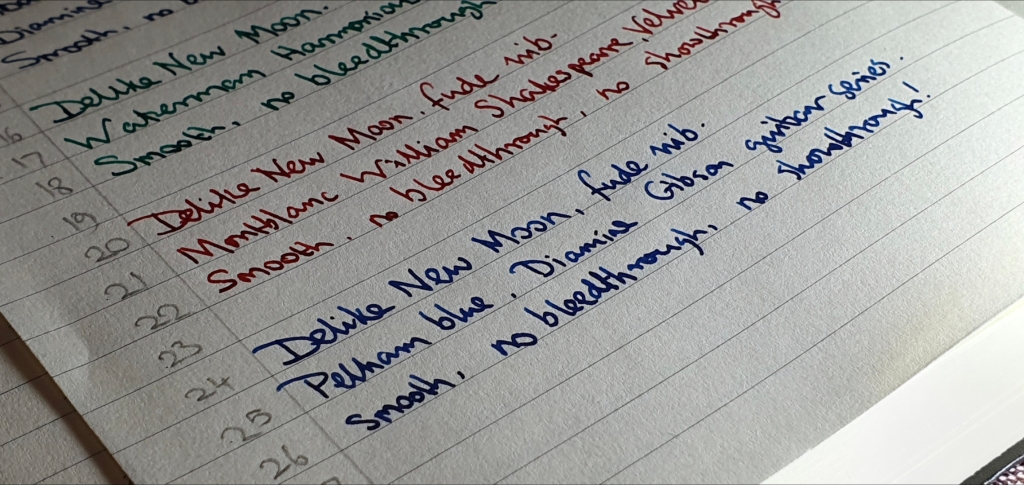Our local WH Smith stationery shop in Brent Cross shopping centre has had another revamp recently and is looking a bit more inviting and spacious as you enter. Whilst browsing, and after circling the racks of roller-balls and fine-liners to check out the fountain pens (mostly Lamy, Parker and Sheaffer), I ventured on to the shelves of journals.
My eyes were drawn to their Moderno B5 notebook, with 96 ruled ivory sheets (192 pages) of 80gsm paper. It has the ubiquitous inside back pocket and an elastic closure.

I did not have any immediate need of a notebook (an understatement, tbh) but was nevertheless tempted by this one, mainly I think due to the interesting B5 size which sits as a nice compromise between A4 and A5. I had no idea whether the paper would be fountain pen friendly or not (which is partly why I am writing this brief review: spoiler alert – yes it is) but found myself making my way to the self-service checkouts to part with £11.99. The lure of a new journal is a strong one.
The notebook has a pleasing grey plastic leather-look cover. I do not yet know whether this plastic will crack and flake in the long term. The book is stitched. The lyrics of Paul Simon pop into my head – every page is neatly bound, “for a poet and a one-man band”, or something.

Getting it home, I could examine the features more closely:
- 96 ruled ivory sheets; (not paginated but I do that myself);
- 80gsm paper;
- rounded corners;
- inside back pocket;
- elastic closure: (a bit slack but usable);
- 8mm row height; (Yay! my favourite)
- 29 rows to the page; (close, but not quite a month’s worth of days);
- one ribbon bookmark;
- produced in China.
One of the first things to be done of course when trying a new notebook, is to test the paper for fountain pen ink. I usually select a handful of pens from my “currently inked” pots and write a line or two with each, to see how the pen feels on the paper, whether it feathers, and crucially whether it bleeds through the paper or shows through too much. I am happy to report that with all the inks I tried, these tests were a success. There was no bleed-through with any of them and very little show-through either.

In terms of usefulness, a B5 journal is rather nice to have. It could be used as a bullet-journal or “bu-jo”. The only caveat is that with 29 rows to the page, you are a couple of days short of a month (or a few sandwiches short of a picnic) but you could add an extra row at the top and another at the bottom of the page, if this is your chosen use. I have done this before on another book, in which I created a three year bu-jo with a double page spread for each month.
I am not one for stickers and washi-tape but do find a bu-jo very useful. For example, unlike a one year diary, you can insert dates for a future year, or even two or three years ahead, such as car insurance renewal dates, MOT expiry dates, or maturity dates for ISAs or fixed term saving accounts.

Then there are the rest of the pages, not allocated to monthly views, which you can use for all sorts of other things. For example I like to make lists of albums from particular artists, and then tick them off after I have listened to them, – which I find so much more satisfying than track-hopping on Spotify.
Above all, I am pleased that I can use fountain pens with the book. The 8mm row height hits the spot for me. I do not think I will use this one for a bu-jo as I am already set up for that, but I shall enjoy having it in stock until a suitable function presents itself. I realise that one should have a NEED of a notebook before buying one, not the other way round, but such is the life of a stationery addict.
My notebooks fall into two broad categories: those which I would want to keep once they are full, and those which I would not (which are typically full of pen and ink samplings and notes of no lasting interest). Having a book which has a durable cover would tend to indicate that it should be used as a “keeper”. In the past I used a Ryman A4 journal as a bu-jo but after several years’ service, the cover material is now flaking off and leaving bits everywhere on my table. If planning to use a notebook for a multi-year bu-jo, then it is wise to consider how the cover might wear.
The B5 size has the advantage of giving you more space on the page than an A5 journal, (of which I use a lot of Leuchtturms) whilst not needing as much space in a bag as an A4 if you wished to take it out and about, to do some writing in a coffee shop, as I like to imagine myself doing, but have not done much of late.
When I next need a B5 journal, which is suitable for fountain pens, I will be ready.

























